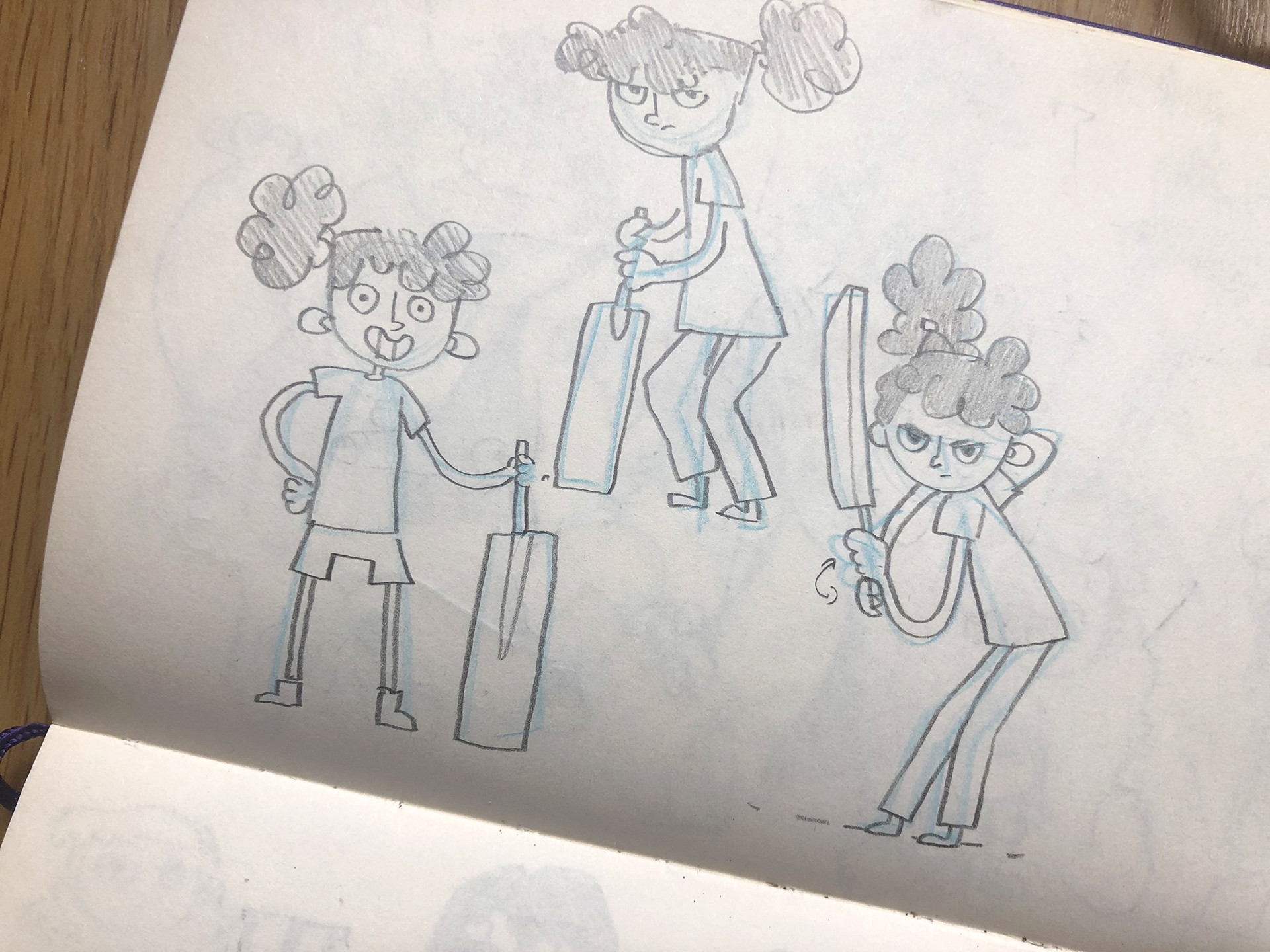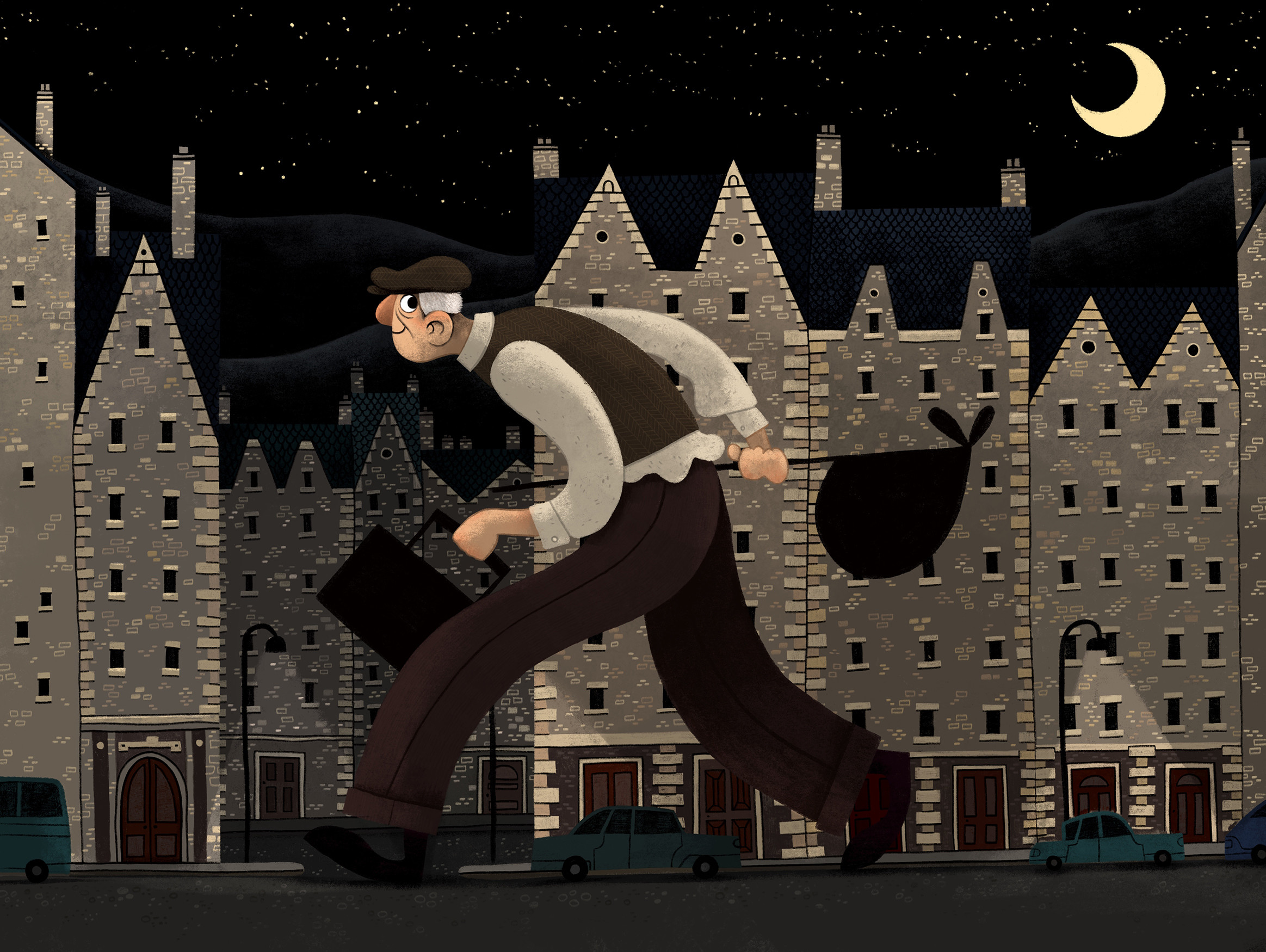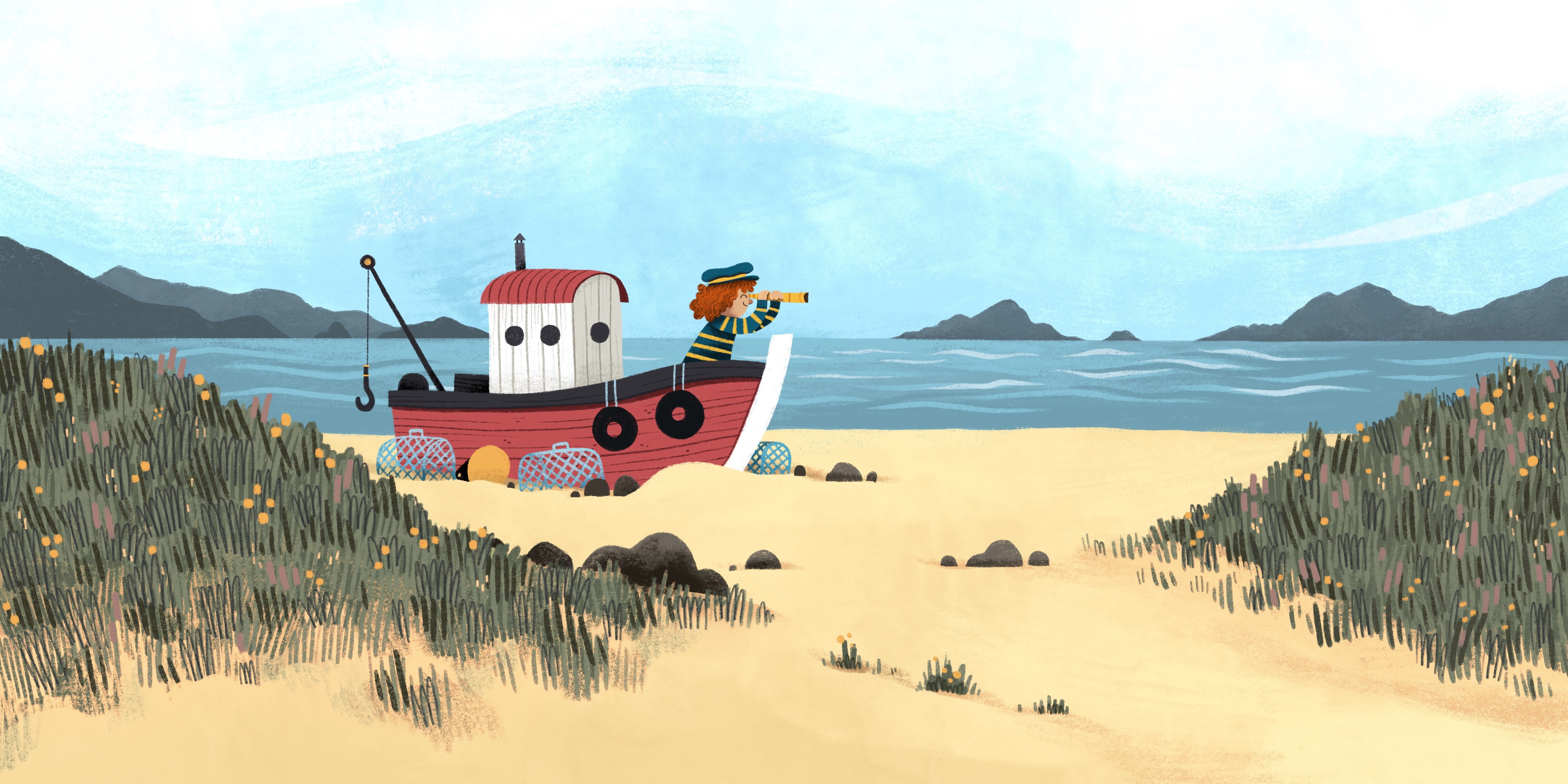
Sam Caldwell
Children's Illustrator
How and why did you decide to pursue illustration as your career?
I have always loved drawing and was encouraged to do so from a young age. I was definitely one of those kids who would doodle in the margins of school books and spend their lunch times in the art room scribbling away. It’s a cliché but it’s true!
As for illustration specifically, I love books. I think they’re a bit of a magical medium and it seems to me that they are one of the few remaining spaces where illustration is still king. I’ve always loved writing stories, creating characters and building worlds so making picture books has always felt like a good fit.
Did you attend art school or undertake any other formal artistic training?
I did indeed. I studied Painting at the Edinburgh College of Art. Ironically, I originally applied to do the Illustration course but quickly switched over to the art department after meeting an unruly gang of eccentric sculptors and painters. I had a great four years there and really indulged in the opportunity to experiment with all sorts of materials and techniques. The most important thing I learnt was how to be productive in the studio everyday and stay motivated under your own steam.
Who or what have been some of your major artistic influences?
I’d say that Ben Shahn is probably my all time favourite painter. His figures and landscapes have been a constant source of inspiration. When it comes to illustrators, Carson Ellis and Lizzy Stewart are both big influences. I was really obsessed with Chris Riddell and John Stewart’s ‘The Edge Chronicles’ as a kid. Having recently looked back at those, it really struck me how much they informed the way I draw characters.
Which books from your own childhood really stand out?
Nick Butterworth’s ‘Percy the Park Keeper’ series was a real favourite of mine. There is one particular spread in ‘After the Storm’ which I would stare at for hours, it shows a big old treehouse full of animal characters. ‘The Jolly Postman’ by Janet and Allan Ahlberg was another favourite. I loved how you could physically take out all of these little letters and see each character’s handwriting and the kind of stationary they’d use!
Describe your working technique and how you came to perfect it.
My work usually starts in pencil on paper. I like to start out very rough and very small until I have figured out the basic idea and composition. These drawings are always completely indecipherable to anyone except me but I think it’s really important not to be too precious or get bogged down with detail and making things look ‘good’ early on.
I will then take the rough thumbnail and work on a larger version, still keeping things loose but figuring out how everything will work in a little more detail. When I’m happy with that, I will either put it on a lightbox with a fresh bit of paper over the top to be inked or do a digital version of this by scanning the drawing and inking over the top digitally.
Once I’ve got the final linework sorted, I take this into Photoshop or Procreate on my ipad to be coloured digitally.
What is your favourite medium to work with and why?
Although I don’t use them as much as I used to, I still really love ink and watercolour. There’s nothing more satisfying than watching that first random bloom of colour on a new painting. I really enjoy the unpredictable nature of working with water based materials. It makes for a nice change sometimes, especially when I’ve been working digitally. You also just cannot beat the feeling of a scratchy dip pen and a gloopy bottle of black india ink!
Do you keep a sketch book?
Yes, definitely. Sketchbooks are a really important part of my work. I use them as a space to experiment with ideas and play around with things.
I used to be really precious about them and want every page to be full of amazing polished drawings, even ripping out pages if they weren’t up to scratch. However, over the years I’ve learnt that its much better to allow the bad drawings and leave the rough things you don’t want people to see in there.
I try to use them as a space where I can fail and not worry about it. I fill mine with bits of journaling, to-do lists and lots and lots of rough, scribbly drawings.



Tell us about the creation of your favourite character from one of your books.
You can see the whole process in this video.
The first drawings you see are from my sketchbook. These were then very crudely photographed on my phone and sent over to my ipad.
I’m using Procreate a lot at the moment for personal work and here you can see how I go about inking these rough drawings.
Working digitally really speeds things up for me at this stage as you can see how many small tweaks and changes I make to the linework.
Who is your favourite children’s book character and why?
I would have to say my favourite is Roald Dahl’s BFG. He’s just the perfect blend of kind old Grandpa figure and mythical fairy tale creature. He inhabits a hidden world and speaks in daft gibberish. A truly winning formula!

Outline your dream project.
I’m currently working on a couple of picture book ideas with my wife. It’s a really fun process. Some of the inspiration behind her stories has come from my illustrations and some of my illustrations have stemmed from things she has written. It’s really nice to be able to build something collaboratively. These images are from a project called ‘Granny’s Lighthouse’ which we are in the process of putting together.



What advice would you offer someone just starting out as a children’s illustrator?
Don’t stress about style! It is something which develops naturally and changes as your interests and inspirations shift.
How do you overcome a creative block?
I think the best way to get out of a creative block is to allow yourself the space to do something completely unrelated to whatever you’re stuck with. Watch a film, listen to some music, go for a walk, ride a bike, cook a curry... that sort of thing. Feed your sub-conscious!
I also find that getting out and drawing from life is always really valuable. I especially like sitting in coffee shops near train stations and drawing all the different people walking by.
